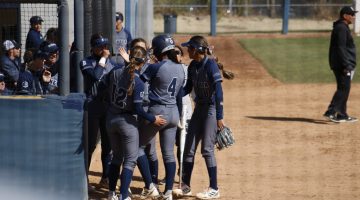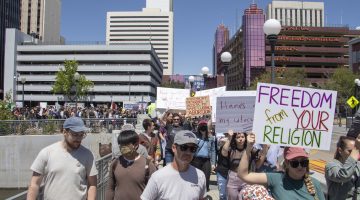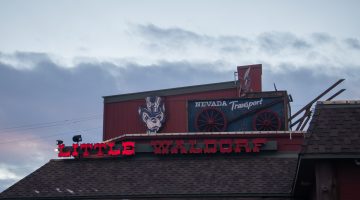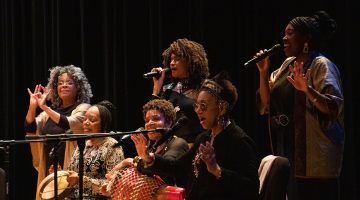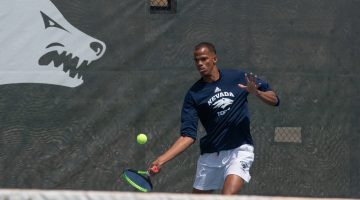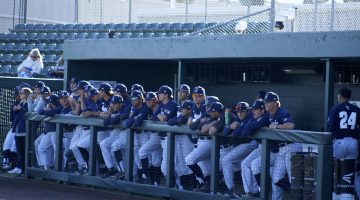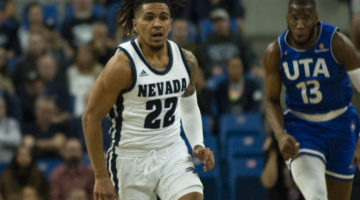As Election Day draws closer, Nevadans are asking one thing: where are the polls? Over 250 polls have been conducted throughout the United States so far in this election, but only 10 have been done in Nevada. Compared to other swing states like Iowa, Florida and Ohio, 10 polls is miniscule.
Polls in Nevada are few and far between and the majority of them have an unusually high margin of error — around 4 percent or higher. Taking the sample size of each poll into account, the average error is closer to 1 or 2 percent, according to the Cornell University Roper Center for Public Opinion Research’s recommended allowance chart.
Nevada is one of the hardest places to poll, according to Clare Malone, a senior writer at FiveThirtyEight, a popular website that focuses on opinion poll analysis, politics, economics and sports blogging. Historically, Nevada polls have proven to be inaccurate. For example, before the 2008 Republican caucus, the polling average in Nevada gave Mitt Romney a 5-point advantage over John McCain. Instead Romney ended up winning the caucus by 38 points.
Another polling failure was seen in Nevada’s 2010 Senate race when Republican Sharron Angle challenged Harry Reid for his seat. The polling average showed her beating Reid by a 3-point margin but she lost to Reid by close to 6 points.
“It is really hard to figure out who lives in the state because the population is pretty transient,” said Kevin Banda, an assistant professor of political science at the University of Nevada, Reno. “It also becomes a challenge to contact people who live outside of Las Vegas, Henderson and Reno.”
According to Eric Herzik, the chair of the Political Science Department at UNR, there are three different Nevadas: the Las Vegas area, Reno and the rural parts of Nevada.
Herzik added that it’s often the rural areas in Nevada that cause a lot of trouble for polling firms.
“You almost have to oversample the rural areas to have any confidence in what you would say about the statewide view,” Herzik said.
The high number of mobile users in the state is another issue facing pollsters.
“It’s estimated that a quarter of residents [in Nevada] do not have a landline,” Herzik said. “So if you’re calling landlines you’re losing 25 percent of the population, and you’re also probably losing a demographic group and that is younger voters.”
Among other issues like needing the polls to be conducted in both Spanish and English, as well as at different times of the day to account for the state’s 24-hour work schedule due to a large gaming/casino industry, there is also a simple lack of interest or knowledge about politics, Herzik said.
“Nevadans, while they have this important swing-vote status, still have very low voter turnout and weak parties,” Herzik said. “All of these things that make it hard to do polling, Nevada has all of them, and at a high level.”
Due to these challenges, the cost of running polls in the Silver State is very high. David Damore, a UNLV political science professor and senior analyst at the Latino political opinion research firm, Latino Decisions, told the Las Vegas Sun that only one of the groups’ polls would typically cost about $30,000 for a sample size of 400-500.
“Polling in Nevada is expensive, at least more expensive compared to other states. Especially compared to other states with such a small population like this,” Banda said.
Iowa, which has only a slightly larger population than Nevada, has twice the amount of polls so far this year.
There’s also the matter of not just how the polls are conducted, but how the public consumes said polls.
According to Banda, paying attention to outlier polls instead of aggregate polls is a common mistake people make. He also said that it is common for people to think of the campaigns as a race, while they are not.
“Polls are an expression of preference, not an expression of behavior,” Banda said. “The thing that makes polling useful is that by the end of the election you typically have aggregated poll results that look like pretty much what you get on Election D ay, but I don’t know if that is going to happen this year.”
Emily Fisher can be reached at efisher@sagebrush.unr.edu and on Twitter @TheSagebrush.


